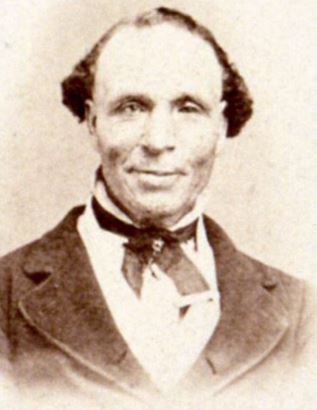As I have attempted to show over the course of this series of essays (here, here, and here), it is often the case that many of our doubts and struggles with our faith are rooted in unrecognized assumptions we have unwittingly absorbed from the larger secular culture in which we are immersed, and which exerts a profound influence on our worldview, our identity, our values and aspirations. A central danger of these secular assumptions is not only that they so often go unrecognized, but that even when we are made aware of them — because they are so widely shared and so commonly endorsed in both explicit and implicit ways — they can strike us as essentially unquestionable truths about the world, easily taken-for-granted as just the way things are. What in reality are merely assumptions — and eminently questionable ones at that — can seem to be simply “just facts” about the world and the way it works. Unfortunately, once our assumptions calcify into unquestionable facts that are no longer open for us to critically question or reflect upon, we become slaves to them and are no longer free to see the world in different, new, or fresh ways. Whether hidden and unacknowledged, or acknowledged and unquestioned, such assumptions necessarily color our self-understanding, our perceptions, and our basic sense of the world, while also providing the foundation out of which our questions (and our answers) about God, truth, and faith arise.
As I hinted at in the previous essay, one significant area where many find themselves struggling to make sense of their faith and religious beliefs, especially in light of the various challenges that arise out of secular assumptions taken to be certainties, has to do with the question of human sexuality and its relationship (or, more accurately, presumed non-relationship) with human agency. It is commonplace in our modern world to hear sexuality spoken of as though it were a powerful abstraction; one that is, by virtue of the unique and pervasive causal efficacy it possesses, capable of defining human identity at its most basic level, as well as determining the content and aim of our most intimate desires, attractions, and thoughts. As psychologists Don Lucas and Jennifer Fox have written:
Sexuality is one of the fundamental drives behind everyone’s feelings, thoughts, and behaviors. It defines the means of biological reproduction, describes psychological and sociological representations of self, and orients a person’s attraction to others. Further, it shapes the brain and body to be pleasure-seeking.
We tend to assume, without much serious reflection, that people “have” or “possess” a “sexuality” or “sexual orientation” — a thing, most likely rooted in our biology (i.e., DNA), and which is presumably responsible for how we are attracted to others, whom we will find most sexually intriguing, and why exactly we perceive ourselves and others as we do. This presumption is relentlessly reinforced through the various vehicles of our culture’s secular liturgies: the books we read, the magazine articles we thumb through, the news headlines we scan, the movies and television programs we stream, the music we listen to, the opinions of celebrities and influencers that assail us continually via social media, and so on and so on.
Because this “thing” known as “sexuality” is taken to be so central to our identity that it colors and controls almost everything else about us it is increasingly thought that almost every other aspect of our lives is best understood from the lens of sexuality. Indeed, for some, sexual politics is taken to be the inescapable and founding context for understanding all interpersonal relationships. Consistently, we are frequently taught in our modern world that in order to live an authentic and fulfilling life, we must discover our “sexuality,” “accept” it, “explore” it, become “comfortable” with it, and find satisfying ways in which to “express” it. In fact, many voices assert that unless we do such things, and, in the end, embrace sexual freedom by giving free reign to our “sexuality,” the inevitable result will be deep psychological pain and anxiety, crippling depression, or even suicide.
What is important to understand here is the way in which a pervasive secular certainty about the nature of sexual desire, when hidden because unexamined, can facilitate a faith crisis . . .
Although many claim that debate about human sexuality being in any vital way agentic is over because science has settled the matter, unequivocally demonstrating (at least to the satisfaction of any reasonable person) that sexual orientation is a fixed and determinative category of being, persistent questions about both the methods of relevant research and the logic undergirding the interpretation of such research remain. The issue here, however, is not so much about whether the reductive interpretations of various scientific findings, or the impassioned arguments of various activists across the political spectrum, have merit. Rather, what is important to understand here is the way in which a pervasive secular certainty about the nature of sexual desire, when hidden because unexamined, can facilitate a faith crisis in the light of prophetic or scriptural teachings that fly in the face of internalized cultural assumptions about such things as, for example, same-sex attraction, marriage, and transgenderism.
Thus, it is not surprising to find so many members of the Church struggling to understand Church teachings and policies regarding sexual intimacy and marriage in the face of what has become taken-for-granted truth of our modern world: sexuality is identity. That is, one’s sexual orientation is taken to be who and what one is. And limiting or constraining the full embrace and expression of who one is, is intrinsically oppressive, harmful, hateful, and even perhaps spiritually destructive. This view is reflected in psychologist Christopher Ryan’s claim that argues, “if expression of sexuality is thwarted, the human psyche tends to grow twisted into grotesque, enraged perversions of desire.” For some, in fact, any prohibitions against personally desired expressions of one’s sexuality are seen as intrinsically and manifestly unfair and unjust.
Unfortunately, as is so often the case with so many issues over which we can find ourselves struggling to make sense of our faith and the obligations it places upon us, the struggle about sexuality is one whose roots lie in secular soil rather than gospel sod. A central feature of our modern age is our propensity to explain the world and ourselves in terms of powerful abstractions or constructs. These abstractions are the controlling, hypothetical (and often hidden) forces presumed to form the very backbone of reality, what Einstein liked to call the “hidden variables” and reflecting a commitment to what Richard Williams has termed “the metaphysic of things.” For example, we often seek to understand people’s behavior in terms of hypothetical abstractions like introversion and extroversion, entities whose existence we infer from observation. “Why is that young man always so quiet, hesitant and awkwardly uncomfortable in social situations?” we might ask. “Well,” the answer comes quickly, “because he possesses the introversion personality type (i.e., the “shyness trait”) and it is what makes him behave that way.” Similarly, it is typical for us to think we have an explanation for the actions of outgoing, exuberant, and cheerful people when we invoke the strength (and, thus, causal power) of the extroversion trait they must possess. The same inferential process is involved when we seek to explain sexual desires and behaviors in terms of the presumed presence and causal power of an abstract and hypothetical entity such as sexuality or a sexual orientation.
Despite our modern propensity to think about and explain the world and ourselves in terms of powerful abstractions (e.g., needs, drives, orientations, traits, etc.) it is not at all clear that such thinking is coherent on its own terms, much less consonant with a gospel-centered worldview that is centered on agentic and moral relationships. Indeed, as Jeffrey Thayne and I have argued (here and here), our modern, Western fascination with abstractions is an intellectual inheritance from our Greek ancestors, and not a feature of the Hebrew worldview we find articulated in both ancient and modern scripture. A hallmark of Greek (or Western) thought is its commitment to understanding the world, first and foremost, in terms of unchanging, timeless, and impersonal abstractions – powerful forces undergirding the world and governing its events. Ancient Greek philosophers like Plato and Aristotle were among the earliest, but hardly the only, shapers of the Western world to advocate for such an understanding of the world. Indeed, one is hard-pressed to identify an influential thinker in the history of the West up to the present day who does not operate within the framework of Greek abstractionism. As the English mathematician and philosopher Alfred North Whitehead famously noted: “The safest characterization of the European philosophical tradition is that it consists of a series of footnotes to Plato.”
In contrast to Greek abstractionism, the scriptural or Hebrew worldview is one in which “truth is not a set of abstract ideas, but a divine person.” The focus of such a perspective is fundamentally on the dynamic and relational, the temporal and the moral, on the unfolding of contextual meaning in the vibrant ongoing activities of daily life and experience, rather than on the pre-given, the static, or that which is distant, unembodied, timeless, abstract, and impersonal. This is a worldview in which moral depth, meaningful agency, and divine activity (in the form of intimate and continuous personal relationship between Creator and Created) are understood to be the very warp and woof of reality. As LDS philosopher and theologian James Faulconer points out, in this scriptural or Hebrew worldview, “to be a person is to do what persons do. The person is because he or she is alive, and life — an activity, not a state — is, for Hebrew thought, the essence of what it means to be. Thus the way something is defines what it is . . . In Hebrew thought, however, how something is and what it is are inseparable.” In other words, in this view, opposed as it is to our modern (i.e., Greek) way of thinking, who we are is defined by our ongoing activities and relationships, not by what the presence or power of some inferred abstractions operating behind the scenes, so to speak.
Working outward from such premises, then, it is easier to appreciate the grounding context for President Nelson’s comments in the April 2017 General Conference regarding the nature or the Atonement of Jesus Christ. President Nelson stated:
It is doctrinally incomplete to speak of the Lord’s atoning sacrifice by shortcut phrases, such as “the Atonement” or “the enabling power of the Atonement” or “applying the Atonement” or “being strengthened by the Atonement.” These expressions present a real risk of misdirecting faith by treating the event as if it had living existence and capabilities independent of our Heavenly Father and His Son, Jesus Christ.
Under the Father’s great eternal plan, it is the Savior who suffered. It is the Savior who broke the bands of death. It is the Savior who paid the price for our sins and transgressions and blots them out on condition of our repentance. It is the Savior who delivers us from physical and spiritual death.
There is no amorphous entity called “the Atonement” upon which we may call for succor, healing, forgiveness, or power. Jesus Christ is the source. Sacred terms such as Atonement and Resurrection describe what the Savior did, according to the Father’s plan, so that we may live with hope in this life and gain eternal life in the world to come. The Savior’s atoning sacrifice — the central act of all human history — is best understood and appreciated when we expressly and clearly connect it to Him.
In other words, the Atonement of Christ is no powerful abstraction with an existence independent of our engagement with us. Rather, the atoning sacrifice of Jesus Christ is “the central act of all human history,” both an historical and an ongoing event that lives and breathes in the unfolding and dynamic relationship we have with Christ here and now, in the immediacy and pulsating context of daily existence. President Nelson continued:
The importance of the Savior’s mission was emphasized by the Prophet Joseph Smith, who declared emphatically that “the fundamental principles of our religion are the testimony of the Apostles and Prophets, concerning Jesus Christ, that He died, was buried, and rose again the third day, and ascended into heaven; and all other things which pertain to our religion are only appendages to it.
Note carefully that the language of “fundamental principles” employed here by the Prophet Joseph Smith refers directly to specific events and acts — the bearing of testimonies by apostles and prophets about encounters with Christ and the events of His life and ministry — rather than abstract entities or hypothetical constructs.
Although my analysis here is somewhat truncated and incomplete, I hope it can be seen that it is worth considering the very real possibility that if something as sacred and intimately relevant to our lives as the atoning work of Christ is not best understood as an abstraction, then it is quite likely that something as sacred and intimately relevant to our lives as sexuality is also not best understood as an abstraction. In contrast, I would like to suggest that it might be far more enlightening and instructive for us to think of sexuality in terms of actual sexual relationships, concrete acts of sexual intimacy, and specific contexts of sexual desiring and moral meaning. In such an approach, sexual agency is not seen (as it usually is) to be merely a matter of deciding how best to obtain the sexual gratification you desire based on the sexual orientation you possess — or, perhaps more accurately, that possesses you. Rather, sexual agency is a matter of the way in which we, as moral agents situated in relationship with Christ and our eternal brothers and sisters, “give ourselves over to” and “take up” various meaningful possibilities of sexual relationship and moral understanding. Our sexuality, then, is not something that just happens to us, something over which we have no control and in the creation of which we play no participatory part. Nor is it merely the sort of “existential given” or “biological condition” in the face of which we must surrender ourselves through acceptance, accommodation, and embrace.
Western fascination with abstractions is an intellectual inheritance from our Greek ancestors, and not a feature of the Hebrew worldview we find articulated in both ancient and modern scripture.
Our sexual identity, in the more dynamic view that gospel teachings about human nature and moral agency invite, is something that flows out of our “taking on” the meanings and moral possibilities of sexual desires and sexual possibilities as we encounter them in the meaningful horizons, relationships, and activities of our daily lives, obligations, and responsibilities. Sexual identity and sexual desire are neither pushed into, nor pulled out of us by powerful abstractions such as drives, needs, or sexual orientations. And, because this is so, our sexual identities and desires are no more central to our lives than any of the other morally meaningful and relational phenomena of which our lives are made. When it sometimes seems to us that our sexual identities and desires are more central, it is because of the particular fashion in which we have taken on and given ourselves over to sexual things and activities, taking them up in particular ways and for particular purposes. We may do this for any of hundreds of reasons, some shared with others, some unique to our own situations and the larger projects of our lives, but the truth of the matter is that as moral agents we are continuously and actively involved in the ongoing construction of our sexual identity and directing of our sexual desires, aspirations, and meanings.
It is important to note here, however, that none of this should be taken to mean that sexuality as morally agentic expression is a matter of simple willpower and conscious deliberative choice-making. All too often, the subtle and complex nature of sexual desiring is reduced to an overly simplistic, and ultimately false and misleading, dichotomy — i.e., either our sexual desires, and the resulting identity we derive from them, are solely a matter of fixed biological forces to which we are inescapably subject or they are purely matters of free individual choice and willfulness, the product of some process of reflective deliberation and decision-making. The reality of moral agency, and of sexual agency in particular, is far more nuanced and dynamic, far more contextually situated at the nexus of bodies and relationships, and far more immersed in divine meanings and eternal purposes than such narrow and reductive views can possibly sustain.
Indeed, it sometimes seems as though the primary purpose of such dichotomies is not so much to bring clarity to our understanding of who we are and how we can be together, but rather to encourage moral discord and conceptual confusion. As C. S. Lewis taught in his classic work of Christian apologetics, Mere Christianity: “He [Satan] always sends errors into the world in pairs — pairs of opposites. And he always encourages us to spend a lot of time thinking which is . . . worse. You see why, of course? He relies on your extra dislike of the one error to draw you gradually into the opposite one.”
Neither a biological account of sexual desire, nor one relying on the autonomous powers of a deliberative willfulness, will help us to fully understand and appreciate the fundamentally divine, relational, moral, and embodied nature of human sexual life. Only through a lens in which we are seen as whole souls, as divine, embodied, agentic, morally situated beings having eternal purpose and living lives of intrinsic meaning, can we truly begin to make coherent sense of ourselves, the nature and meaning of sexual desire, and the moral purpose that provides life with its most basic foundation.
It goes without saying that such a view of sexuality, one in which sexual desire is understood as innately and fundamentally active and morally agentic, has implications for a wide variety of human activities, including diagnoses and therapies, interpersonal relationships, marriages and families, and our larger conceptions of morality and the good life. It also has implications for our deepest aspirations, chiefly among which is our understanding of what it means to be a human being and to be “at one” with one another and with Christ. After all, if the central quest of life is — as taught by so many secular liturgies — to reconcile ourselves to some powerful abstraction such as sexuality, whether one rooted in the givens of biology or in the mysteries of the psyche, then what room is left for giving ourselves over, in all our hopes, desires, and aspirations, without reservation, to one another in sacred intimacy and to God in sacrificial love?

















